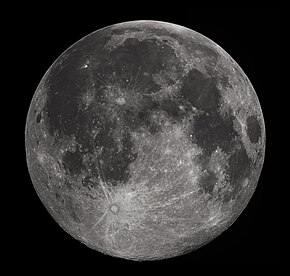The Atmospheres of the Solar System
07/25/2014 from http://www.compoundchem.com/2014/07/25/planetatmospheres/
Mercury
Mercury doesn’t really have an atmosphere in the strictest sense of the word – its incredibly thin atmosphere is estimated to be over a trillion times thinner than Earth’s. Its gravity is about 38% that of Earth, so it isn’t capable of retaining much of an atmosphere, and in addition, its proximity to the sun means that the solar wind can carry gases away from the surface. Particles from the solar wind, coupled with the vapourisation of surface rock as a result of meteor impacts, are probably the largest contributors to Mercury’s atmosphere.
Venus
Venus is similar to Earth in several respects: its density, size, mass, and volume are all comparable. The atmosphere is where the similarities end, however. The atmospheric pressure is around 92 times that found at sea level on Earth, with the main gas being carbon dioxide - the result of previous volcanic eruptions on the planet’s surface. Higher in the atmosphere, the planet also has clouds which are a mixture of sulfur dioxide and sulfuric acid. There is a thick layer of carbon monoxide (DJS note: should be "dioxide") below these clouds, which subjects the surface of the planet to an intense greenhouse effect. Surface temperature on Venus is around 480˚C – much too hot to sustain life as we know it.
Earth
Earth’s atmosphere is composed primarily of nitrogen and oxygen, which are essential for the life which inhabits the planet. The composition of the atmosphere is a direct consequence of the plant life. Plants take in carbon dioxide and expel oxygen through photosynthesis, and without them doing so, it’s likely that the percentage of carbon dioxide in the atmosphere would be significantly higher.
The greenhouse effect that carbon dioxide is partially responsible for is the result of molecules of greenhouse gases absorbing infrared radiation, which is re-radiated towards the surface of the planet and surrounding atmosphere. Without this natural warming effect, temperatures on Earth would be significantly lower worldwide. The greenhouse effect is not the same as global warming – this is the intensification of the natural greenhouse effect via the emission of further greenhouse gases into the atmosphere by human activities. Venus is an extreme example of the runaway consequences of increased global warming!
Mars
The atmosphere of Mars is, much like Venus, composed primarily of carbon dioxide. Having mentioned the extreme greenhouse effect present on Venus as a consequence of the high carbon dioxide levels, it may seem puzzling that the surface temperature of Mars reaches a maximum of 35˚C. This is because the atmosphere of Mars is significantly thinner than that of Venus, so although the proportion of carbon dioxide is comparable, the actual concentration is much lower. The dustiness of the atmosphere gives Mars its characteristic appearance.
Jupiter
Jupiter is the first of the gas giants, and the largest planet in the solar system. Its atmosphere is, interestingly, fairly similar to the composition of the Sun. Unlike the inner planets, there isn’t a clear point at which the atmosphere of Jupiter stops, and the liquid interior of the planet beings. Around a third of the way towards the planet’s core, the pressure is high enough for hydrogen to exist as a metallic liquid, which can conduct electricity and is responsible for Jupiter’s electromagnetic field. Jupiter’s banded cloud system contains varying amounts of ammonia, water, and ammonia-sulfur compound clouds, and also complex sulfur, phosphorous and carbon compounds.
Saturn
Much like Jupiter, the upper clouds in Saturn’s atmosphere are thought to be composed mainly of ammonia ice, with clouds of ammonia hydrosulfide and water lower down. The sulfur present in the atmosphere gives a pale yellow hue to the ammonia clouds. Although not present on the graphic, Saturn’s moon Titan has possibly the most intriguing atmosphere in the solar system, which is the only nitrogen rich atmosphere outside of Earth’s. It’s the only other body in the solar system on which stable surface liquid has ben confirmed, as well as the only other body where it rains – though the rain is liquid methane, rather than water, and it’s estimated there are centuries between each rainfall at specific locations on the surface.
Uranus
The atmosphere of Uranus is, like Jupiter and Saturn, mostly hydrogen and helium. However, the slightly higher levels of methane, particularly in the upper atmosphere, cause greater absorption of red light from the sun, in turn causing the planet to appear a blue-cyan colour. Uranus has the coldest atmosphere in the solar system, at approximately -224˚C, and its atmosphere contains much more water ice than Jupiter and Saturn as a consequence of this.
Neptune
As with Uranus, the blue colouration of Neptune is partially a consequence of the presence of methane – however, as Neptune is a deeper blue, it’s thought that some unknown constituent of the atmosphere must also contribute towards the colour. As the stratosphere of Neptune contains more gaseous hydrocarbons than Uranus, its temperature is marginally higher. Neptune is also home to the strongest winds in the solar system, with their speeds potentially as high as 600 metres per second.
Pluto
Pluto hasn’t been a planet for a fair few years now, but that’s no reason to leave it out of the fun. On that note, after posting this, I threw this graphic together, so that Pluto doesn’t feel left out in the cold:
Here’s the atmospheric composition of Titan, where it rains methane every few centuries:
